Journey to the top of New Zealand and explore Northland, one of the least inhabited areas of this country. Climb giant sand dunes, cruise through the Bay of Islands, see the largest trees in the country, learn about the Treaty of Waitangi, and drive on the longest beach in New Zealand…these are all things to do in Northland.
This is a beautiful, rugged part of New Zealand, packed with beaches, spectacular coastal scenery, rolling hills, and tiny towns. Northland feels emptier and more remote than other regions of New Zealand, but that is what makes it so special.
Many visitors to New Zealand never make it this far north, choosing to spend their time south of Auckland. But if you have the time in your itinerary and like the idea of exploring remote, uncrowded beaches and driving through these green, rolling hills, add Northland to your trip.
An Overview of Northland
Northland is the northernmost region of New Zealand. This long, skinny peninsula is lined with white, sandy beaches and islands. Its interior is lush and green, with rolling hills that are dotted with grazing sheep and cows and many small towns.
Northland is often called the Winterless North because it has a mild climate all year.
According to a Māori legend, the North Island of New Zealand was an enormous fish. Northland is the tail of this fish, or Te Hiku o Te Ika.
The Twin Coast Discovery Highway is an 800 km/500-mile driving loop in Northland. It runs from Auckland on State Highway 1, then turns left onto State Highway 12, traveling along the west side of Northland, through the Waipoua Forest. It rejoins State Highway 1, travels north to Cape Reinga, then travels down the east side of the peninsula on State Highway 10 through Kerikeri. Beyond this point, the loop follows State Highway 1 south to Auckland.
It takes several days to visit Northland, with a day spend cruising the Bay of Islands and one to two days to drive north to Cape Reinga, visiting the beaches, coastal walks, and forests along the drive.
Best Things to Do in Northland
In no particular order, here are the best things to do in Northland, New Zealand. At the end of this list, you can see all of them on a map.
1. The Bay of Islands
Consisting of 144 islands, the Bay of Islands is known for its beautiful blue water, dramatic shorelines, and picturesque coves.
The Bay of Islands was originally settled by the Māori about 700 years ago. Captain James Cook was the first European to visit the Bay of Islands and gave the archipelago its name in 1769.
Popular places to visit in the Bay of Islands include Hole in the Rock, Urupukapuka Island (the largest island in the Bay of Islands), Otehei Bay (one of the bays at Urupukapuka Island), Russell, and Motuarohia Island (the original landing site of Captain Cook).
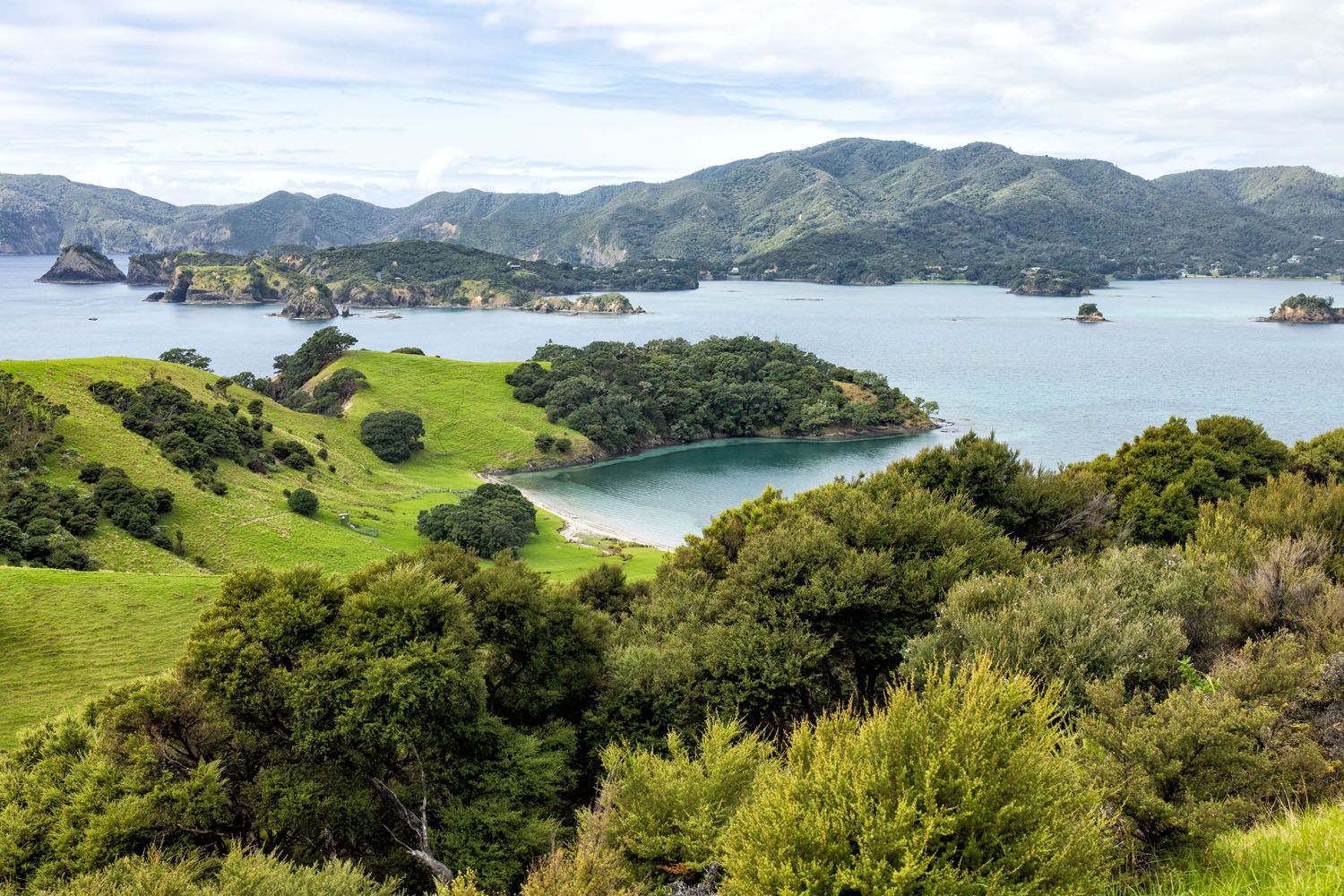
Urupukapuka Island
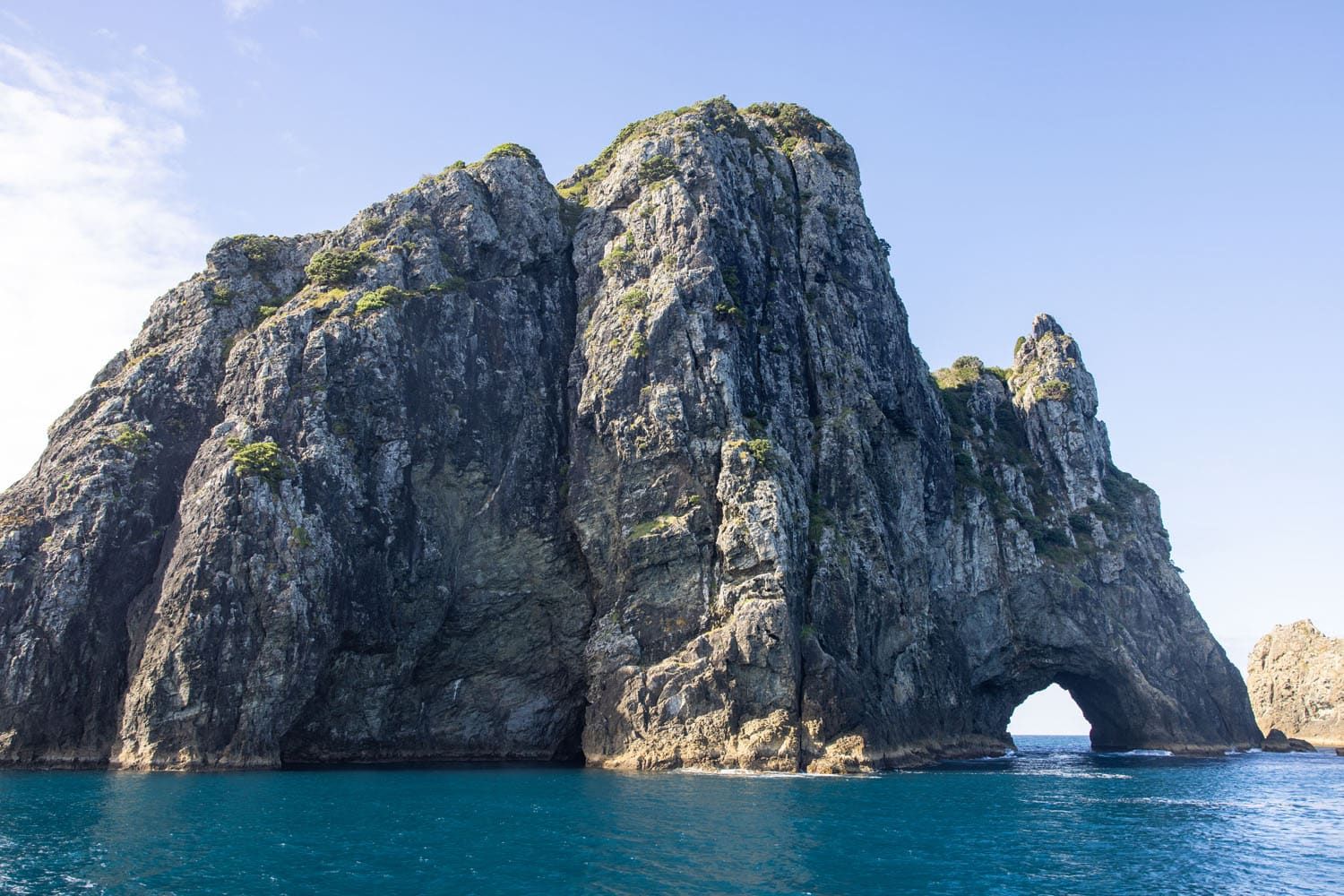
Hole in the Rock
You can visit the Bay of Islands on a cruise or a helicopter tour.
There are numerous boat tours to choose from. We took this this half day tour which includes Hole in the Rock, a 1.5 hour stop on Urupukapuka Island, and the opportunity to see dolphins and other marine wildlife.
This 5-hour boat tour also includes Hole in the Rock, two island stopovers, and the chance to go paddleboarding or snorkeling.
For something a bit more thrilling, this hour and a half jet boat tour includes a visit to Hole in the Rock.
Helicopter Tours of the Bay of Islands are offered by Salt Air and depart from Paihia. They offer three different experiences that range from a flight over the Bay of Islands (20 minutes), a flight plus landing at Hole in the Rock (35 minutes), and a flight plus nature walk led by a Māori guide (60 minutes). They also offer a flight + cruise combo so you can experience the Bay of Islands from both the air and sea.
For more information on how to visit the Bay of Islands, plus many more photos, take a look at our Guide to the Bay of Islands.
2. Spend Some Time in Russell
Russell, also called Kororāreka, is famous for being the first permanent European settlement in New Zealand.
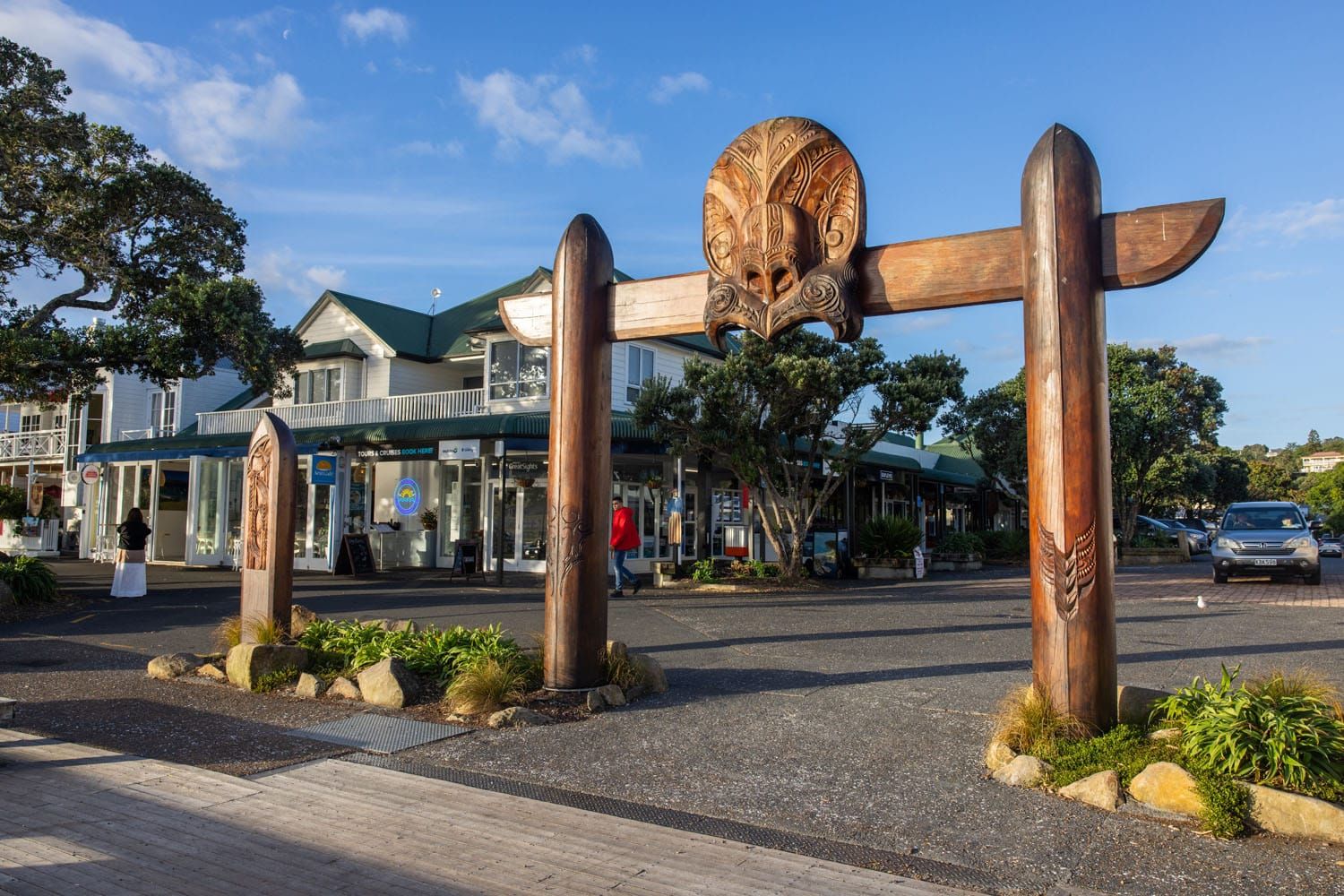
Russell
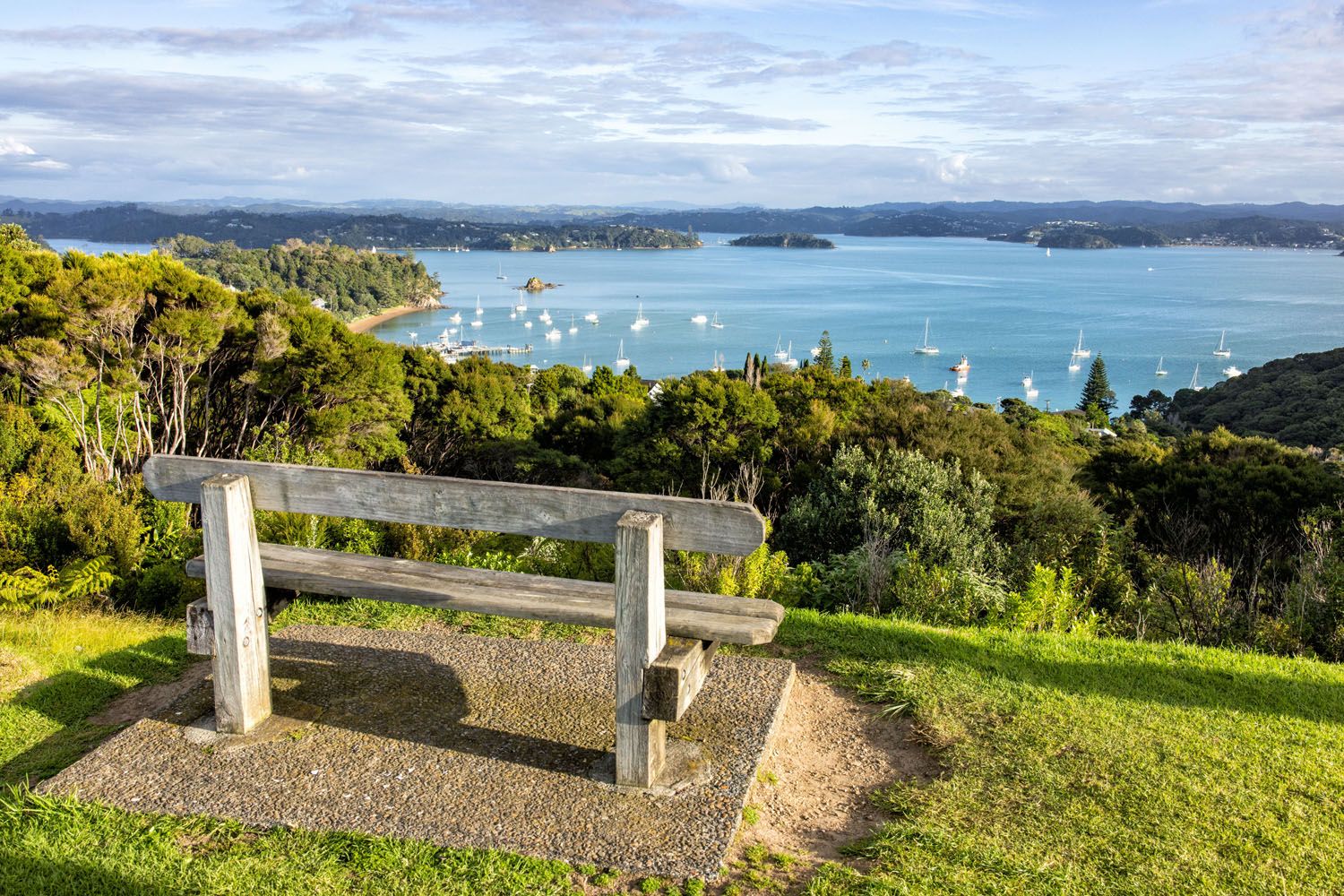
Flagstaff Hill
This small coastal town is located in the Bay of Islands. It is a delight to stroll through, with a charming waterfront area and collection of restaurants.
While in Russell, have dinner at the Duke of Marlborough, enjoy the view from Flagstaff Hill, and see Christ Church, New Zealand’s oldest church.
3. Visit Cape Reinga / Te Rerenga Wairua
Journey to the very top of New Zealand and visit Cape Reinga.
In Māori, Te Rerenga Wairua means the leaping off of spirits. The Māori believe that Cape Reinga is the point where spirits of the dead enter the underworld.
A lighthouse is perched at the end of the peninsula. From this point, you can gaze out to the point where the Tasman Sea and Pacific Ocean meet.
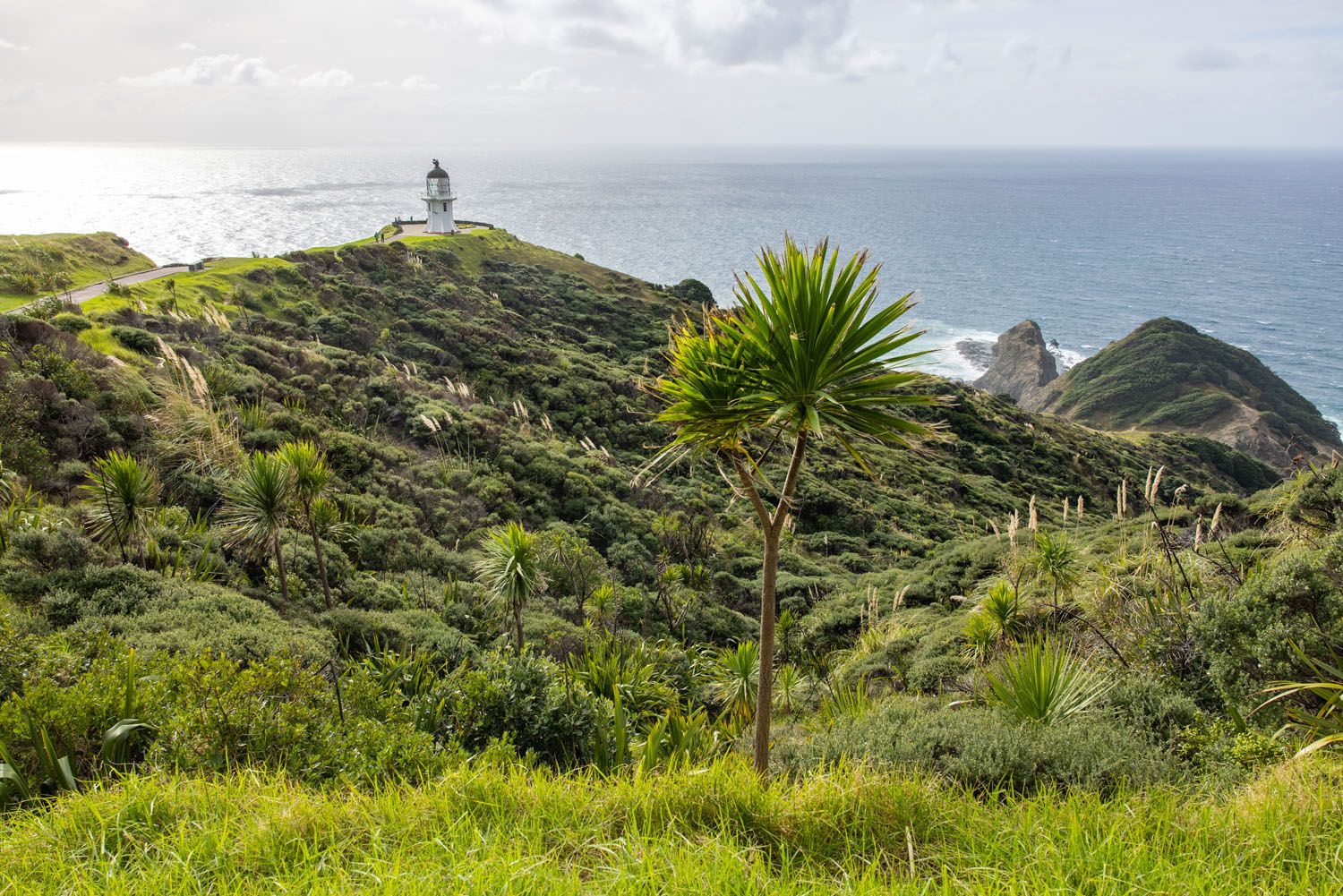
Cape Reinga
To get here, drive State Highway 1 until it ends at the Cape Reinga parking area. This is a beautiful but hilly drive, with coastal views on either side of the road. There is a large parking area with bathrooms.
From this parking lot, there are several things to do.
The best thing to do is to walk from the parking lot out to the Cape Reinga Lighthouse. This walk is 800 meters one way. From the parking lot, it is a downhill walk to the lighthouse, so be prepared for a mostly uphill walk to get back to your car. It is paved the entire way. It is worth walking all the way out to the lighthouse because the views from the walk and the lighthouse are incredible.
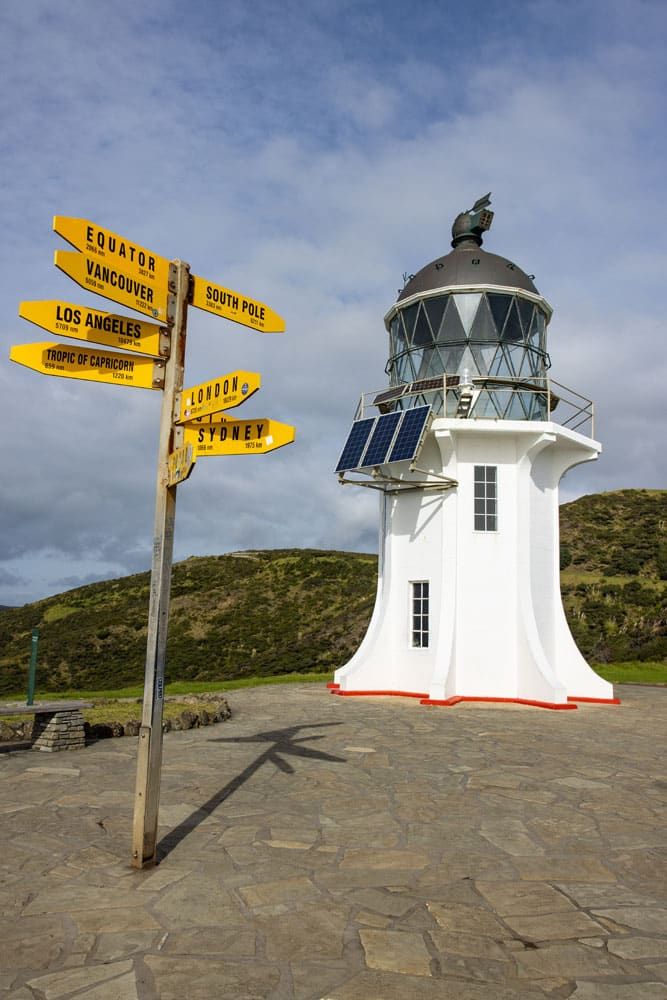
If you don’t want to do that walk, there is a short, paved trail that runs next to the parking lot and offers spectacular views looking west towards a sandy beach and peninsula of rocks.
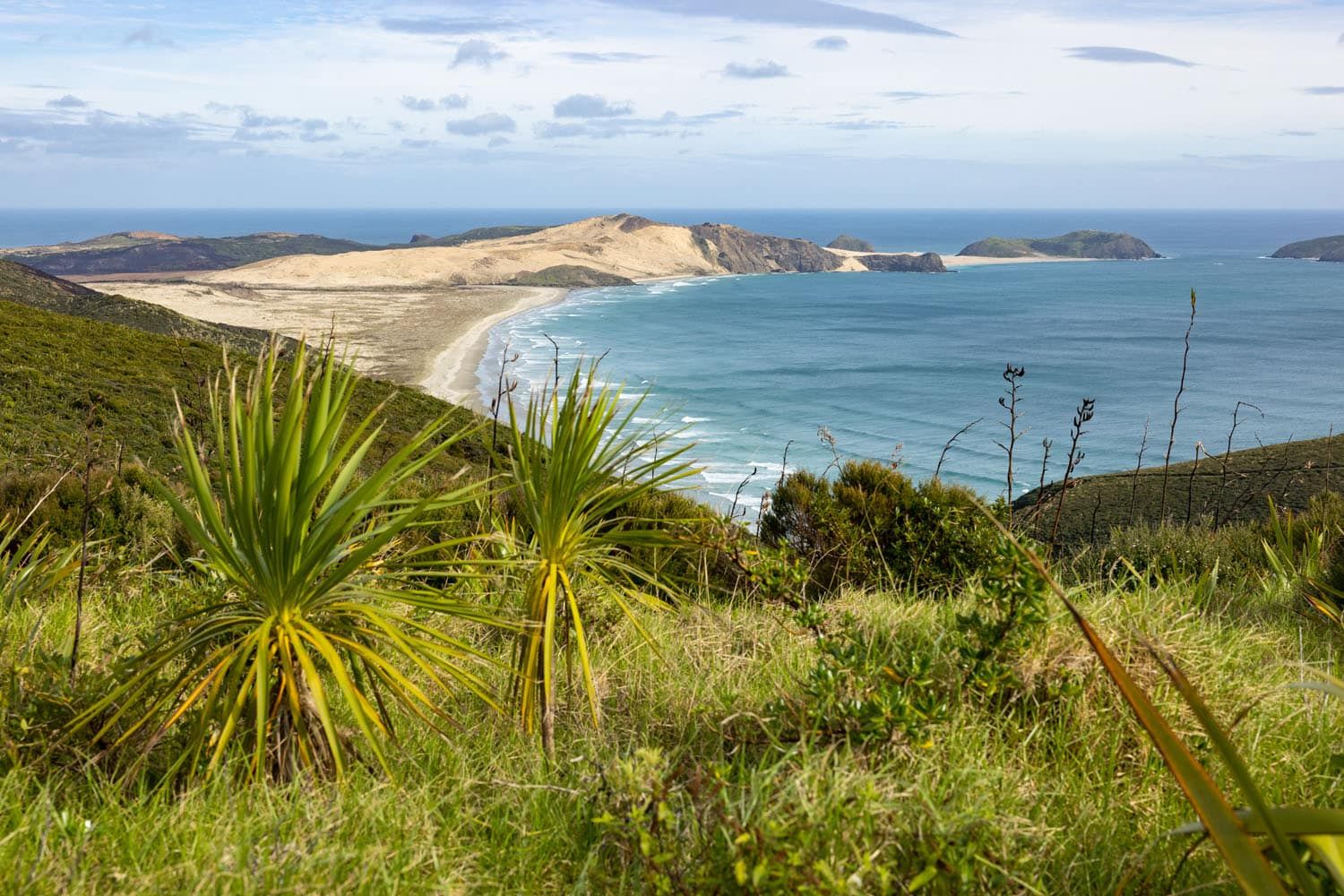
From the Cape Reinga parking lot, you can also hike to Tapotupotu Beach (or skip the hike and drive there…mentioned next) or the Te Paki Coastal Track (a 48-kilometer multi-day hiking trail).
PRO TRAVEL TIP: Cape Reinga is not the northernmost point of New Zealand. The northernmost point is located on the Surville Cliffs at North Cape / Otou.
4. Enjoy the Solitude at Tapotupotu Beach
Tapotupotu Beach is a small beach located in the Te Paki Recreation Reserve, just a short drive from the Cape Reinga Lighthouse.
The Cape Reinga lighthouse was one of the busiest places that we visited in Northland. This short detour takes you away from the crowds and deposits you on a quiet, remote beach. When we were here, we had this beach all to ourselves.
To get here, turn onto Tapotupotu Road from State Highway 1. Tapotupotu Road is a curvy, paved road that drops down to the beach. At the beach, there are toilets and a camping area. This makes a great spot for a picnic lunch.
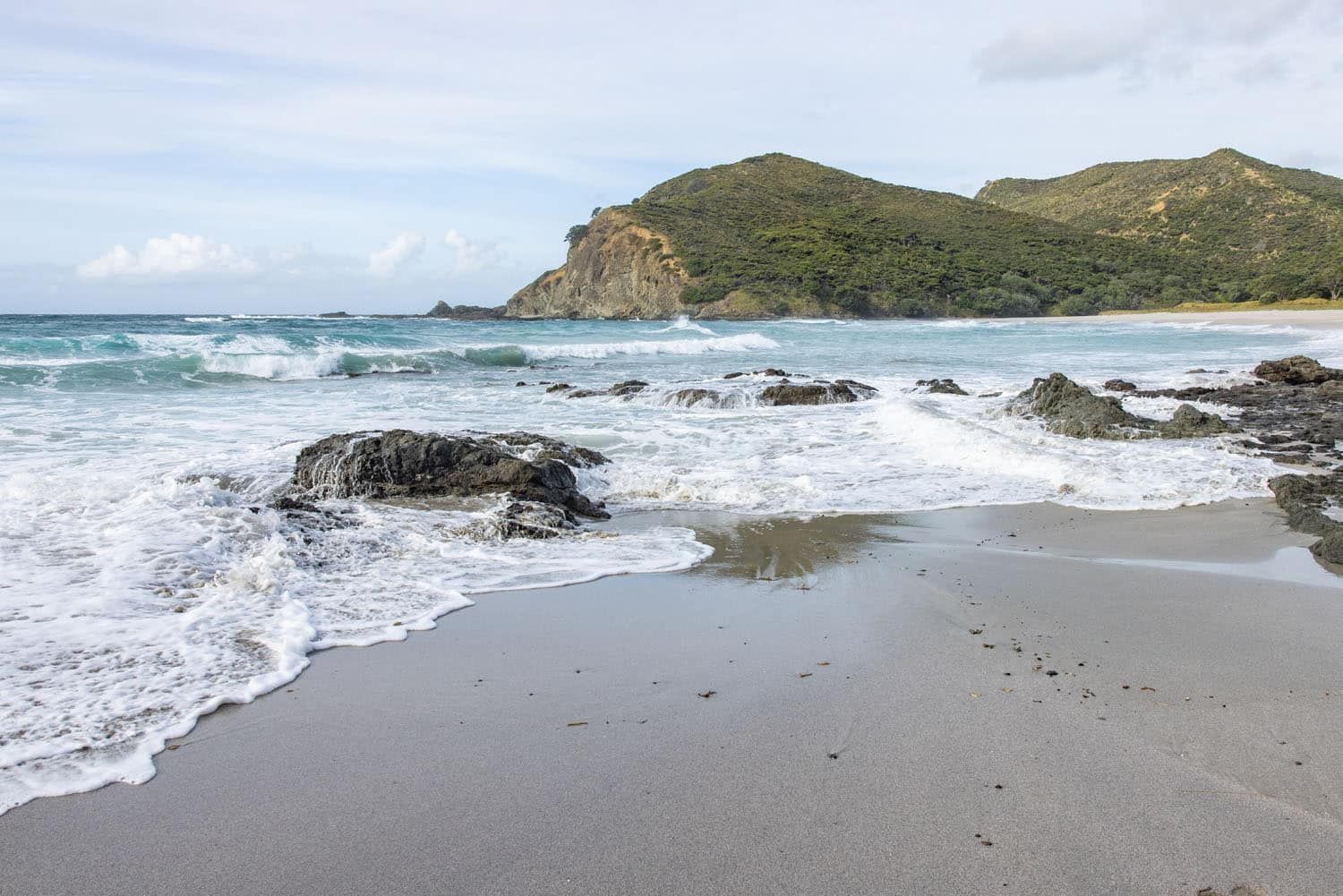
Tapotupotu Beach
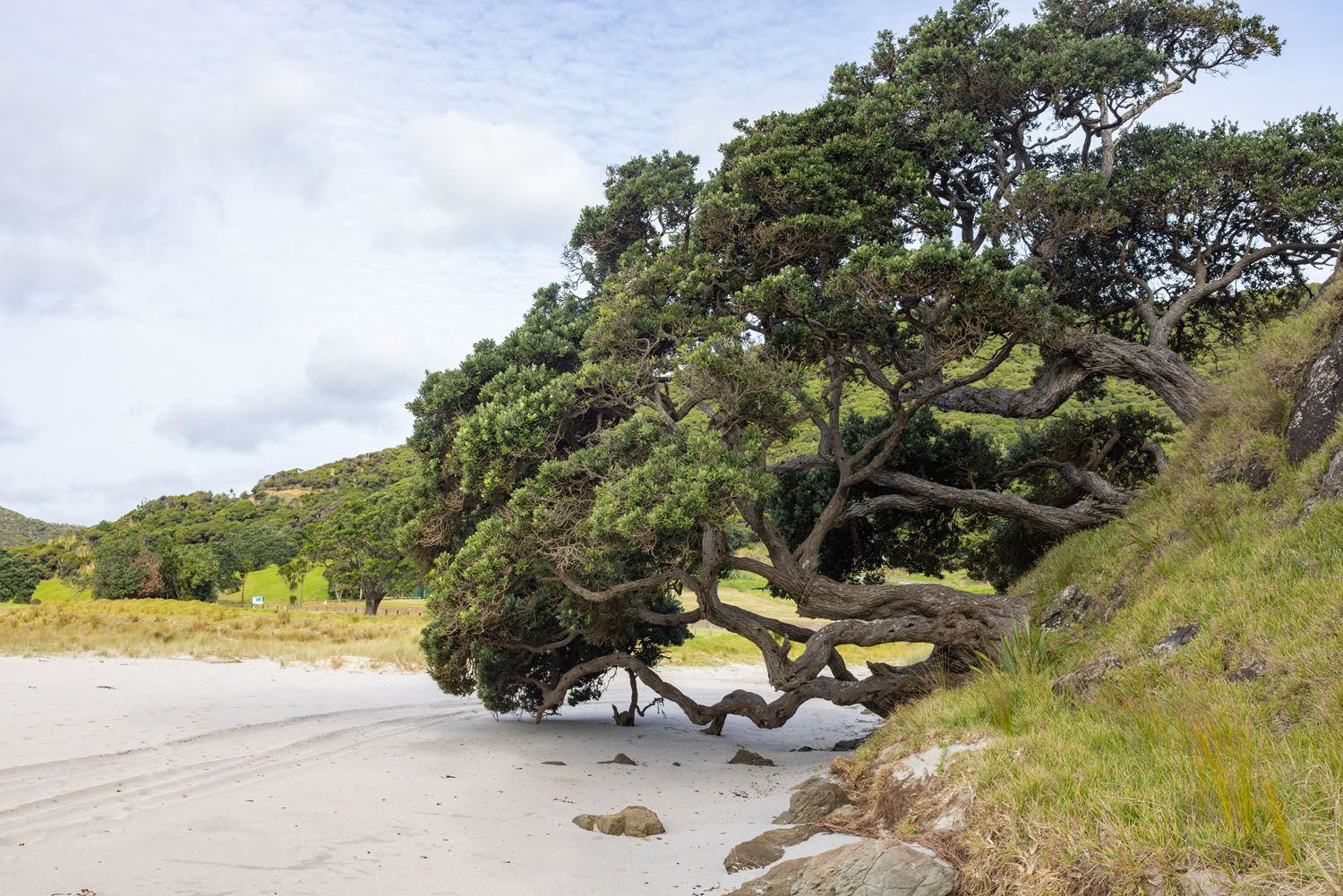
5. Drive Ninety Mile Beach
For one of the most unique driving experiences in New Zealand, drive Ninety Mile Beach from Ahipara to Scott Point.
This 88 km beach is used as a “highway.” To drive this beach, you must have a 4WD vehicle. If you don’t have a 4WD vehicle, you can get views of this long expanse of sand from the town of Ahipara and the Giant Sand Dunes.
If you choose to drive Ninety Mile Beach, check the tide schedule. For safety reasons, do not drive on the beach 3 hours before high tide until 2 hours after high tide. Keep your speed under 70 kph/hour, lower your tire pressure, and do not drive at night. Cellular service is limited so make sure you have enough gas, food, and water.
Since we did not have a 4WD vehicle, we just visited the beach at Ahipara. Renting a 4WD vehicle is more expensive and would have added a huge cost to our trip to New Zealand, and for us, that was not worth it to drive the beach.
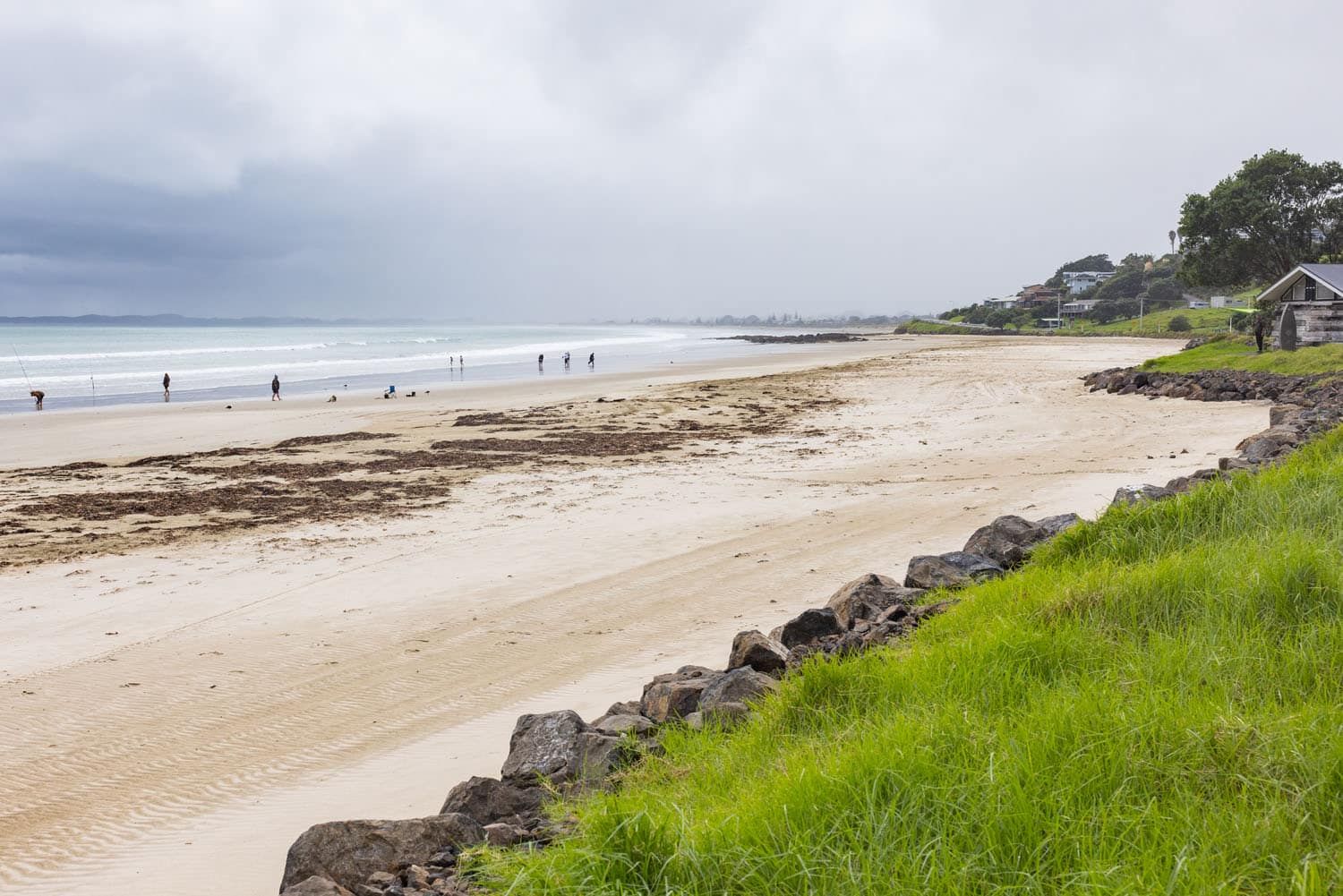
Ninety Mile Beach
6. Visit Rarawa Beach
This beautiful white sandy beach is located in Northland, not far from State Highway 1. It makes a great detour when driving to or from Cape Reinga. There are toilets here as well as a campground.
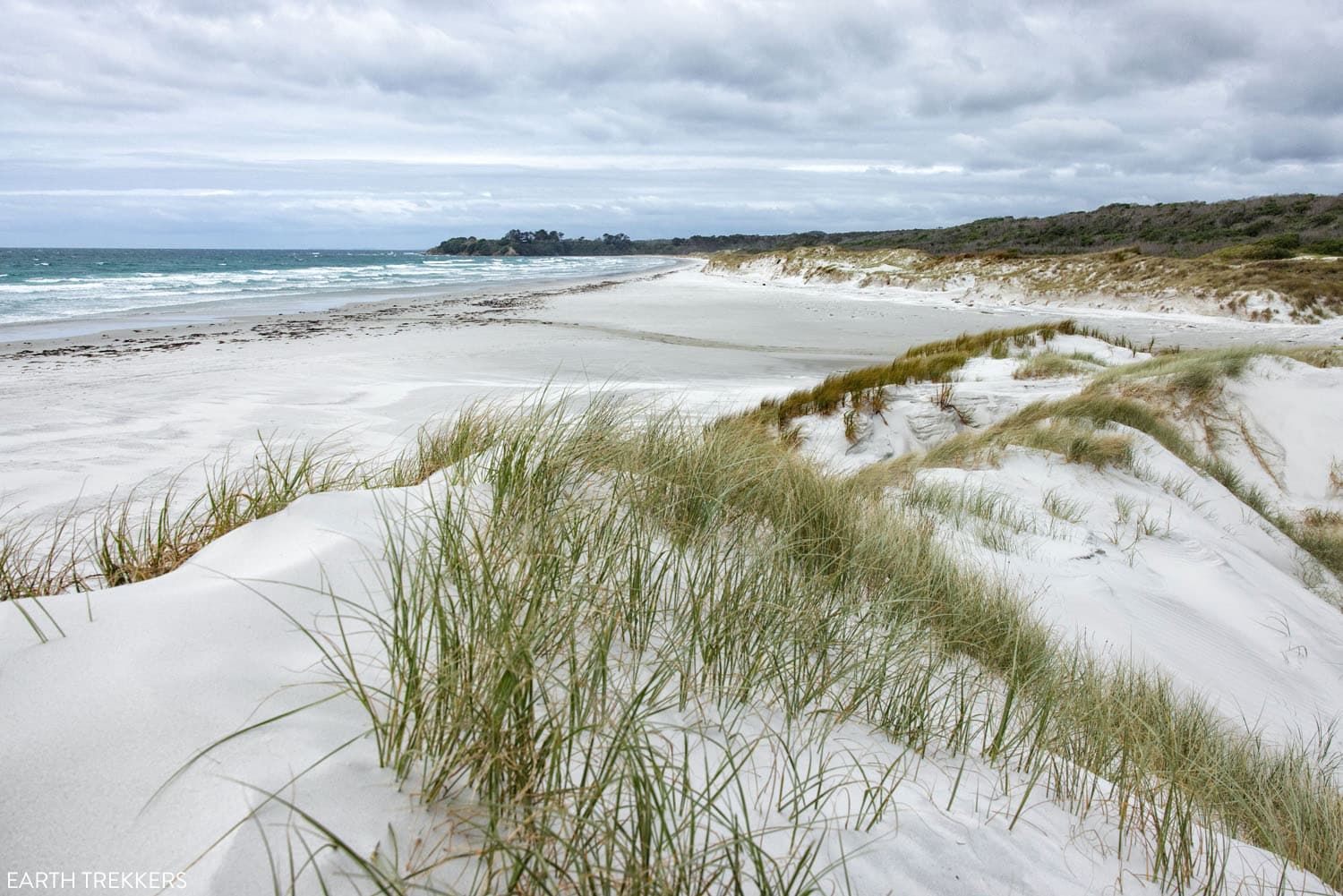
Rarawa Beach
7. See the Largest Tree in New Zealand: Tāne Mahuta
Standing within the Waipoua Forest are some of the largest trees in New Zealand.
Kauri trees are native to New Zealand. By volume, these can grow to be the largest trees in the country. Their trunk diameters can become a massive 5 meters in diameter and they can grow to be 40 to 50 meters tall. Kauri trees grow on the North Island of New Zealand.
Many of the kauri trees were cut down in the 1800’s. More recently, Kauri dieback disease is threatening the trees that remain.
The Waipoua Forest is located near the west coast of Northland. There are two short trails here that take you to the two largest trees.
Tāne Mahuta is the largest tree in New Zealand. To see this tree, park at the parking lot on State Highway 12 and it is a 5-minute walk on a boardwalk trail to see this ancient tree. According to the sign that stands next to the tree, Tāne Mahuta is over 2,000 years old and over 50 meters tall.
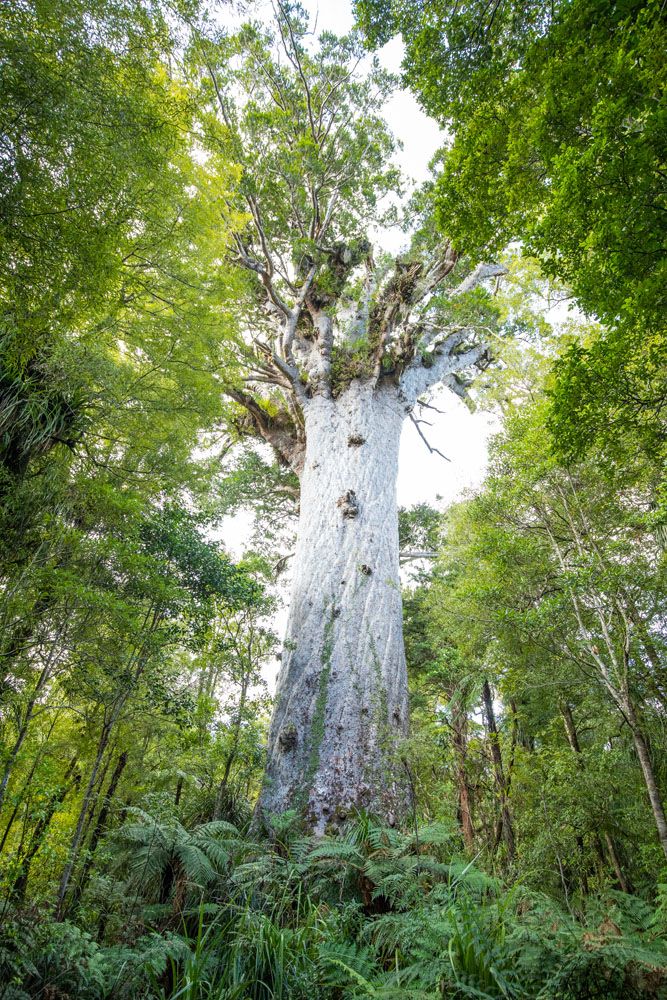
Tāne Mahuta
Te Matua Ngahere is the second largest Kauri tree. To see this tree, park at Kauri Walks (just down the road from Tāne Mahuta) and it is a 2.25 km/1.4 mile flat walk. It takes about 30 to 45 minutes to do this walk and photograph Ta Matua Ngahere.
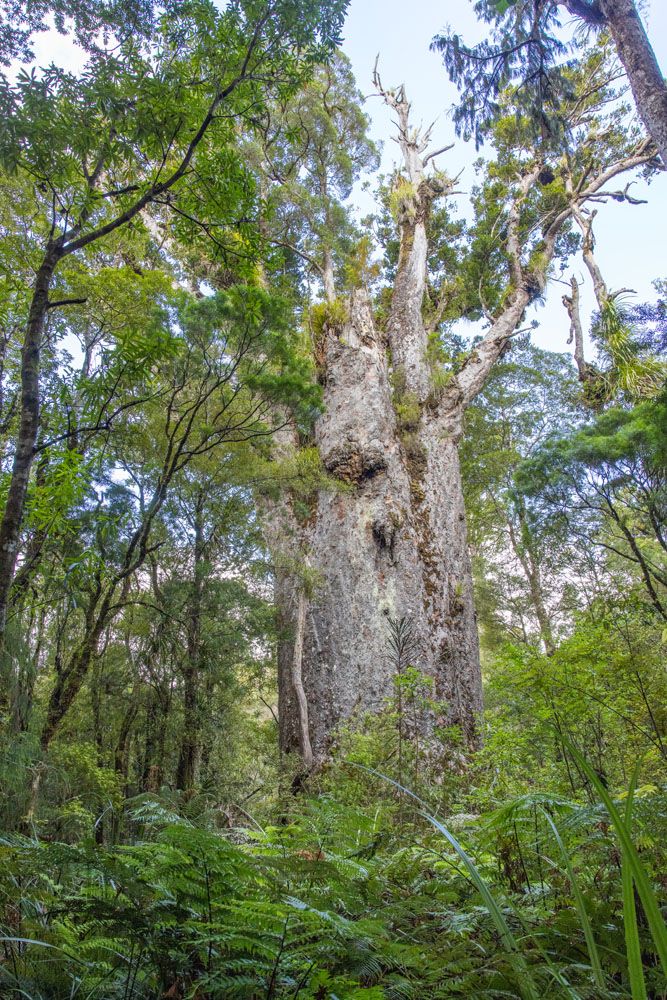
Te Matua Ngahere
Because of the kauri dieback disease, you will have to clean your shoes off before and after entering the hiking trails. There are designated areas to do this at both parking areas.
8. Visit the Kauri Museum
At the Kauri Museum, learn more about the kauri tree, about the gum that comes from the tree and how it is used, and a history of the logging of the tree. A new exhibit, the Forest Walkway, tells the Māori perspective of the kauri story.
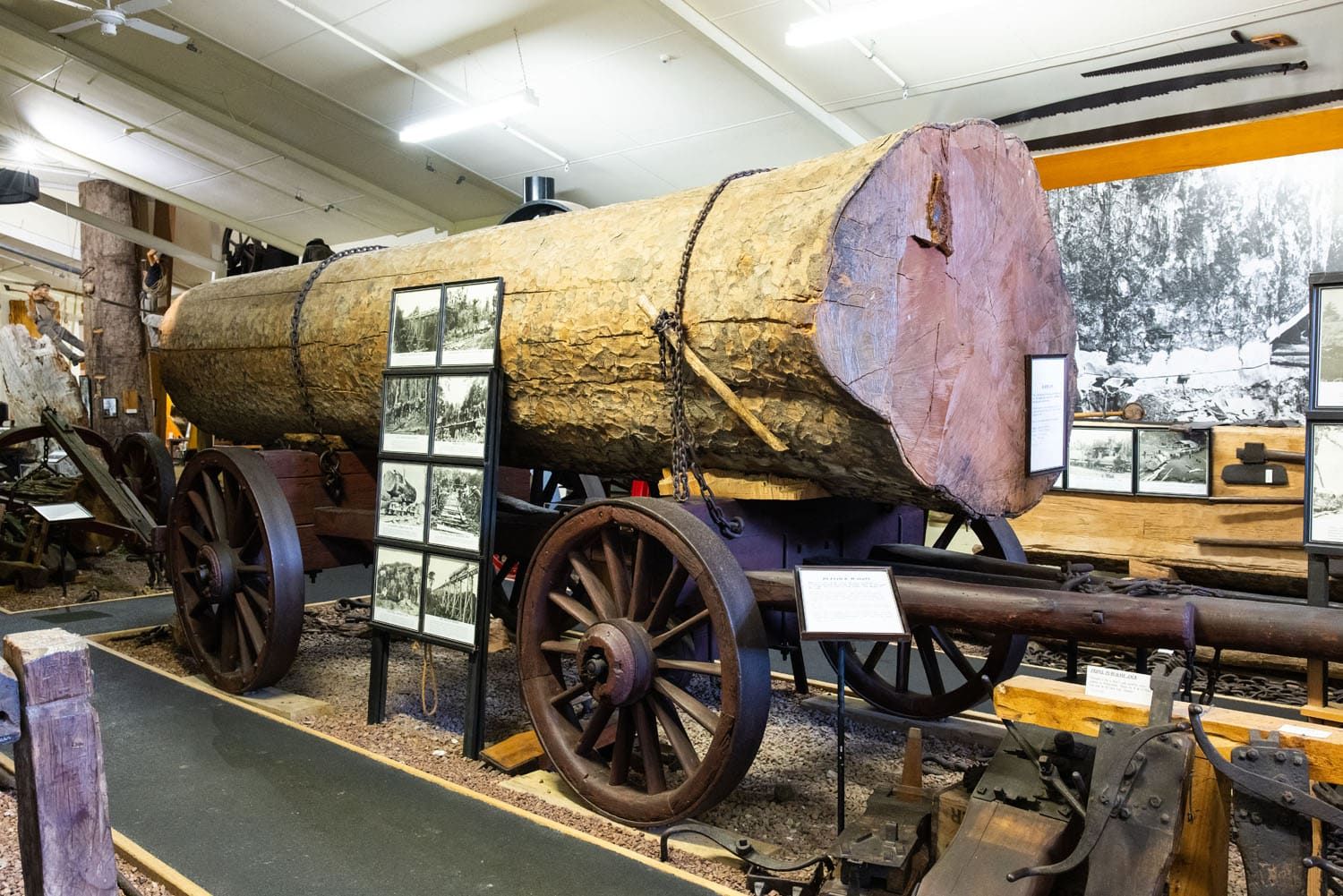
This museum is open daily and a visit takes 30 minutes to one hour. Learn more on the official website.
9. Photograph Whangarei Falls
Whangarei Falls is a popular photography and swimming spot in Northland. It is located 10 minutes outside of Whangārei.
From the parking lot, it is a 2-minute walk to the viewpoint of the waterfall. There are two viewpoints here, a lower viewpoint and an upper lookout. Plan on spending about 30 minutes here, to walk to the two viewpoints and take photos, longer if you also plan to go swimming.
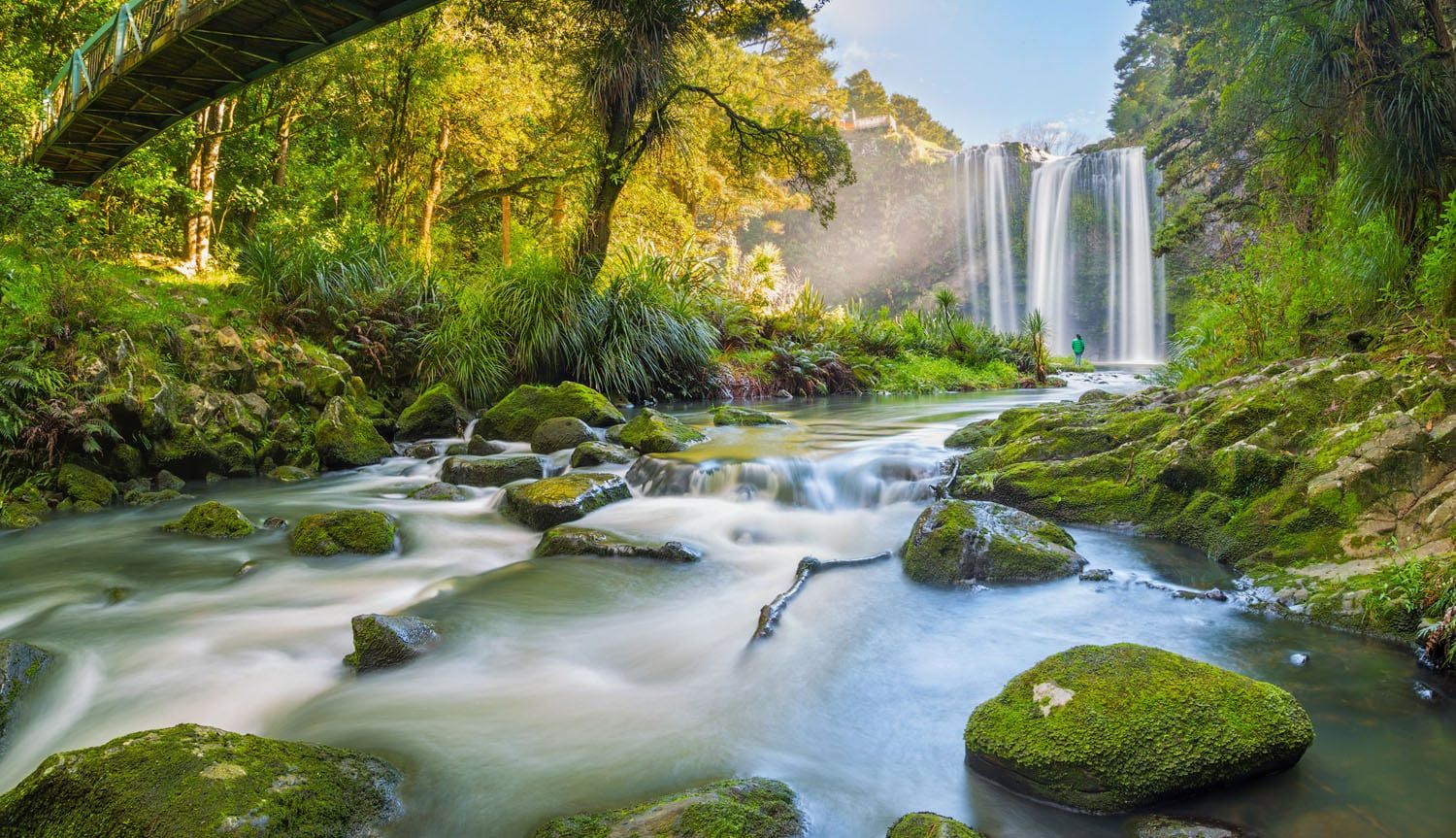
Whangarei Falls | Anupam hatui/shutterstock.com
10. Learn about the Treaty of Waitangi
The Treaty of Waitangi (Te Tiriti o Waitangi) is Aotearoa New Zealand’s founding document. It is a written agreement between the Māori chiefs and the British Crown to share power in New Zealand. It was first signed at Waitangi on February 6, 1840 and copies of the treaty were sent throughout New Zealand and signed by Māori leaders.
The treaty was designed to share power between the Māori and the Europeans, but it was largely ignored until the late 20th century. In 1975, the Treaty of Waitangi Act established the Waitangi Tribunal to establish a partnership between the Māori and non-Māori, to protect and celebrate Maori culture. You can learn more about the Treaty of Waitangi here.
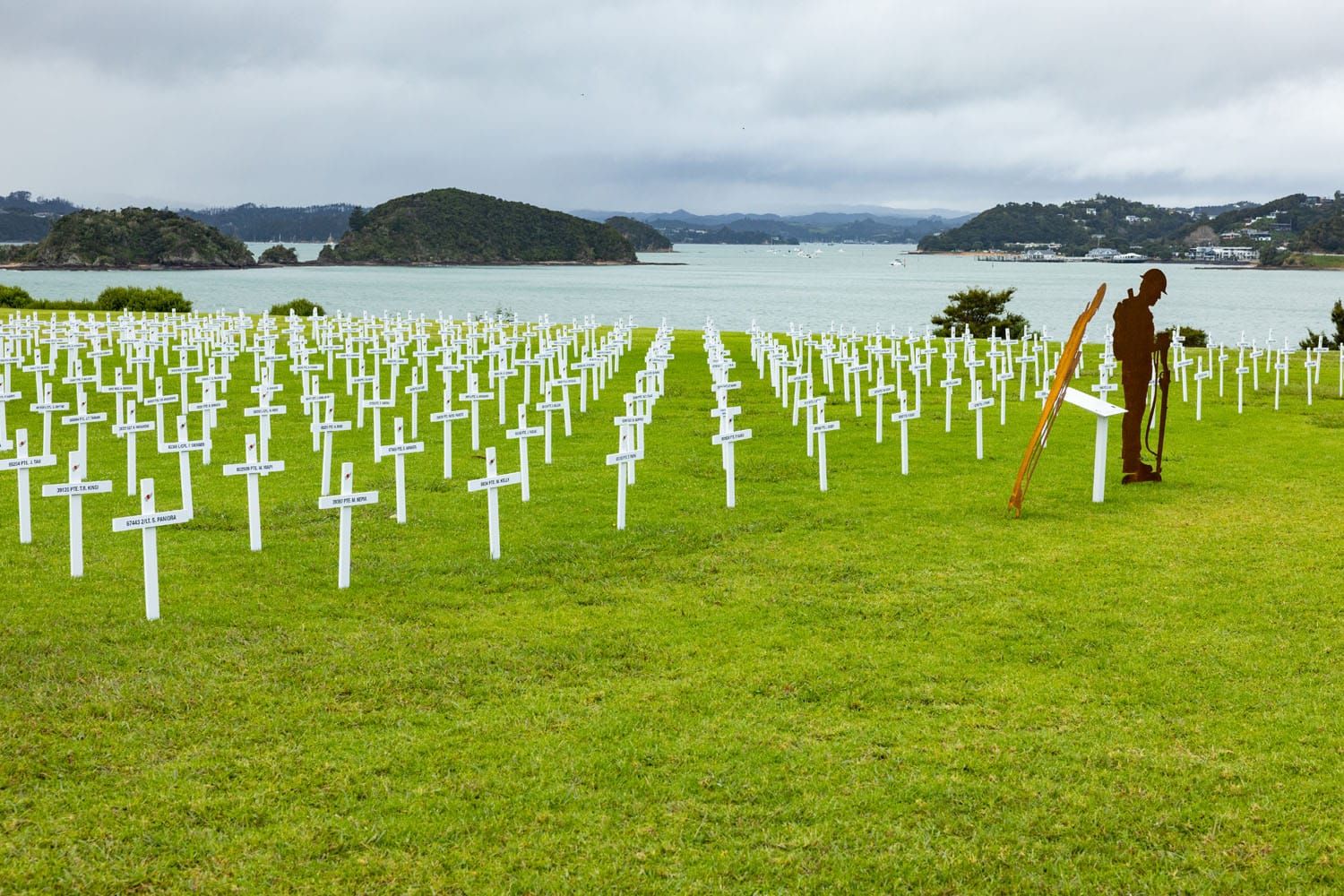
Waitangi Treaty Grounds
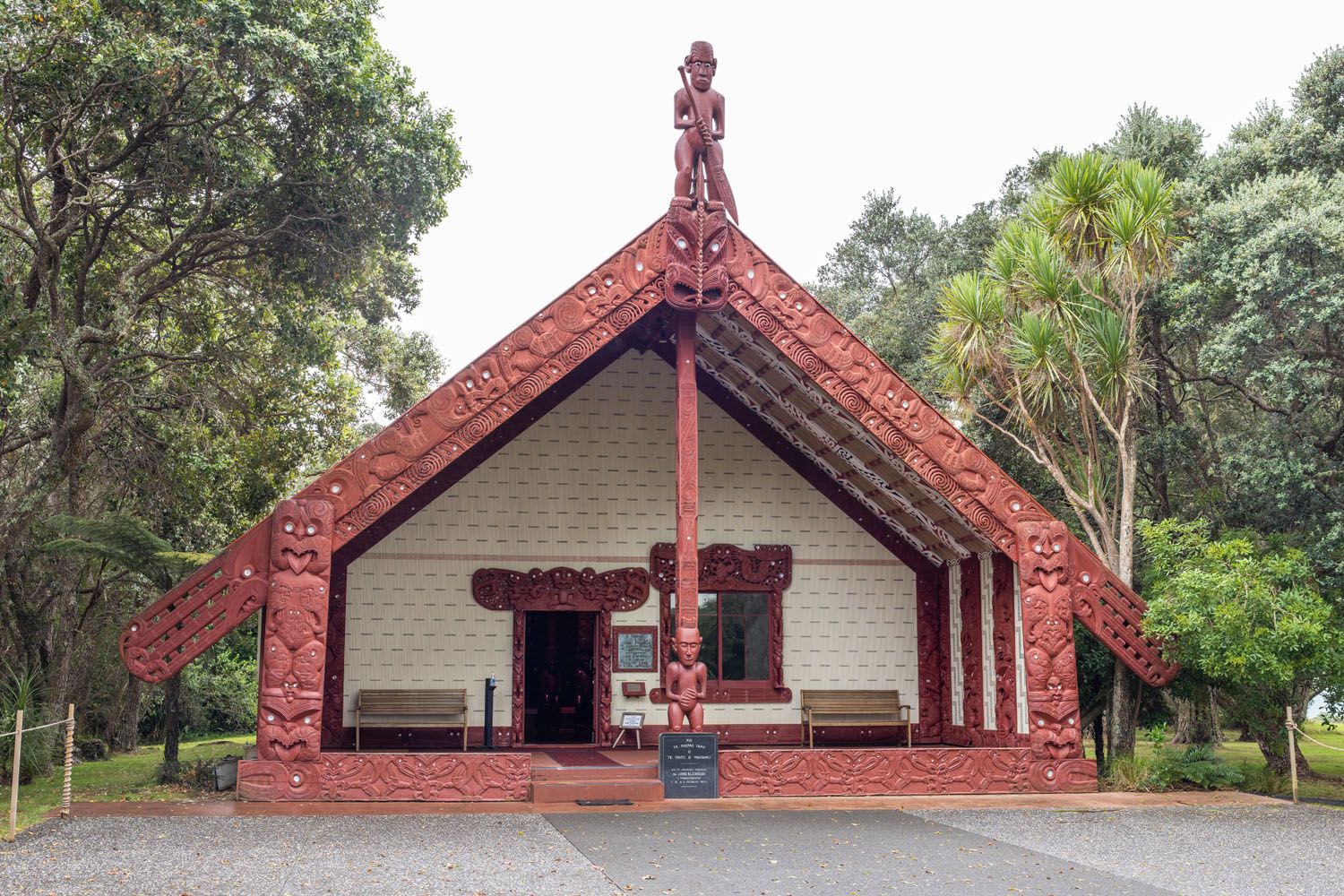
Te Whare Rūnanga
At the Waitangi Treaty Grounds, which is located near Paihia, learn more about the Treaty of Waitangi at the Museum of Waitangi and the Museum of the Price of Citzenship. At this site, you can also see the Te Whare Rūnanga (a beautifully carved meeting house), visit the Treaty House, and see the Ngātokimatawhaorua (the world’s largest ceremonial waka (canoe)). The flagstaff marks the spot where the Treaty of Waitangi was first signed.
Learn more about the Waitangi Treaty Grounds and get pricing and hours on the official website.
11. Poor Knights Islands
The Poor Knights Islands is a small archipelago that sits of the east coast of Northland. This is a popular scuba diving and snorkeling spot. You can take a cruise to the islands or join a scuba diving or snorkeling tour. Learn more here.
12. Photograph the Koutu Boulders
The Koutu Boulders are similar to the Moeraki Boulders on the South Island of New Zealand. Sitting on a quiet beach in Hokianga Harbour are large mineral concretions that can reach 3 meters in diameter.
To see the Koutu Boulders, we drove Koutu Loop Road and turned left onto Waione Road. At the first bend in the road, there is a car park to left. On Google Maps this car park is labeled Koutu Boulders Car Park. From the parking lot, it is a short walk to the beach. Turn right on the beach and it takes less than 5 minutes to walk to the first group of boulders. Keep walking along the beach to see more groups of the Koutu Boulders.
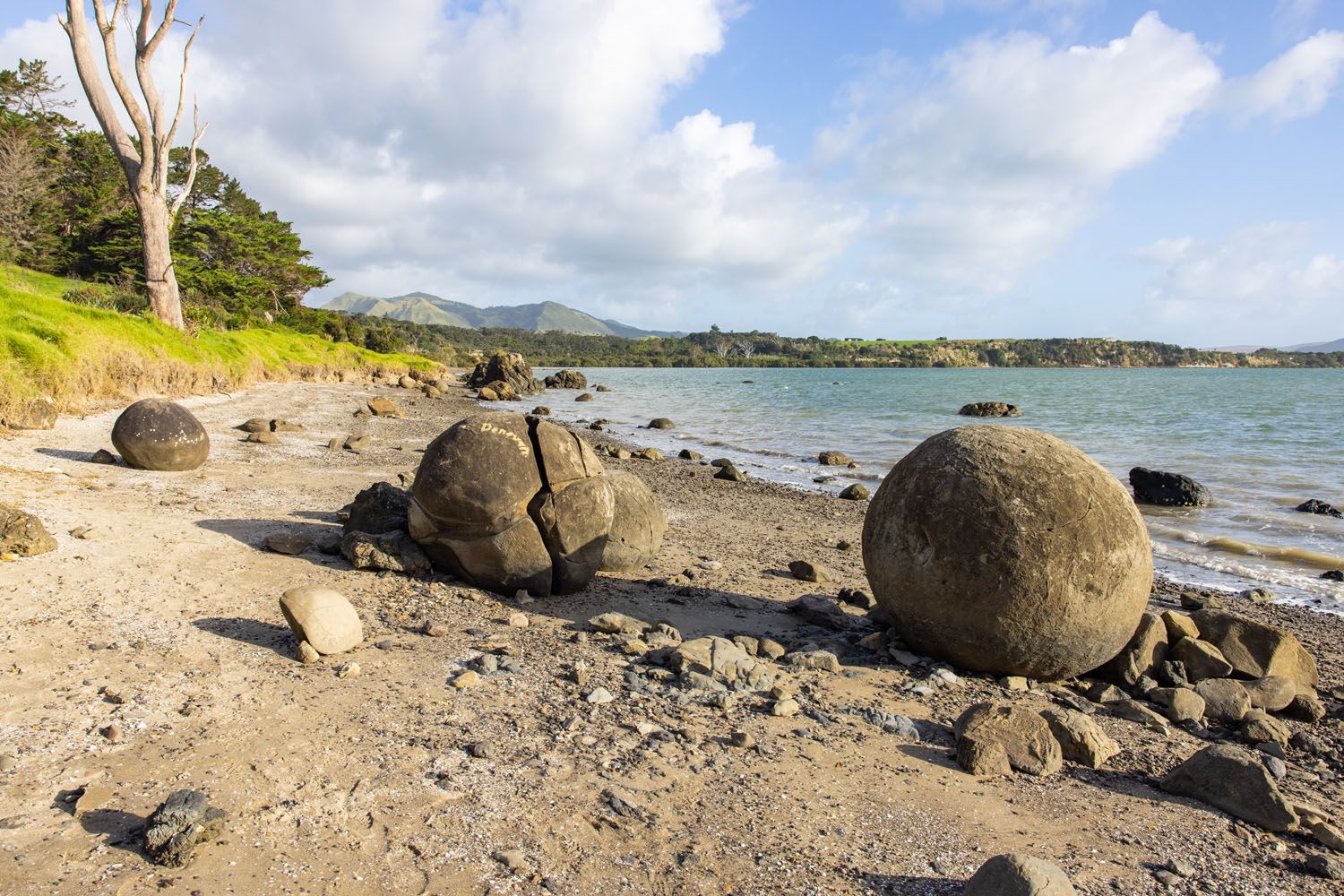
Koutu Boulders
13. Hike the Signal Station Track
To get to one of the most beautiful viewpoints in Northland, hike the Signal Station Track. It is located in the Arai Te Uru Nature Reserve near Ōmāpere.
This 1.4 km/0.85 mile round trip walk is mostly flat and rated as easy. From the parking lot on Signal Station Road, you will walk out to the end of the peninsula on the Signal Station Track. To your right, you have a spectacular view of Martin’s Bay. From the end of the peninsula, you can see the rugged Waimamaku Coast.
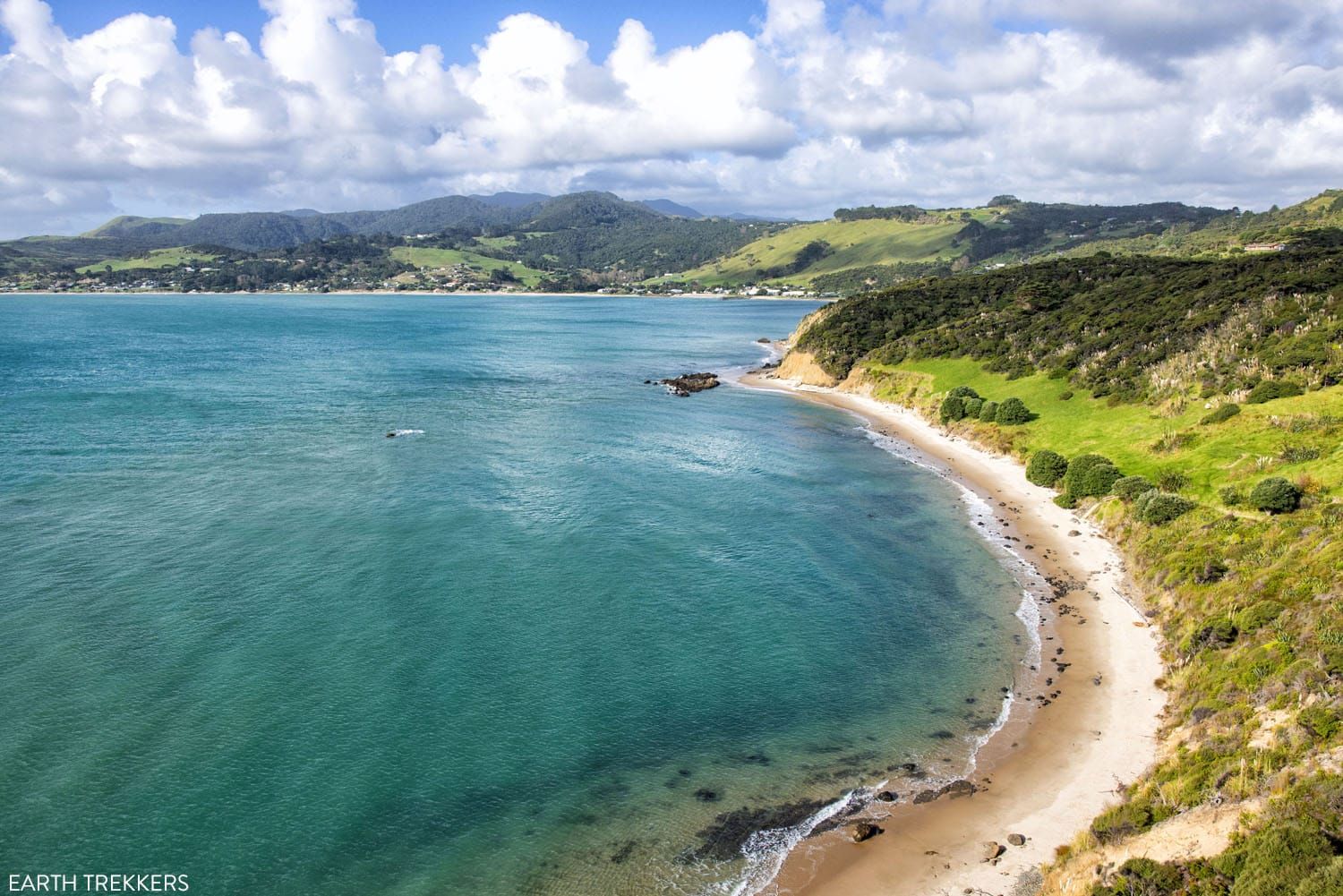
Martin’s Bay
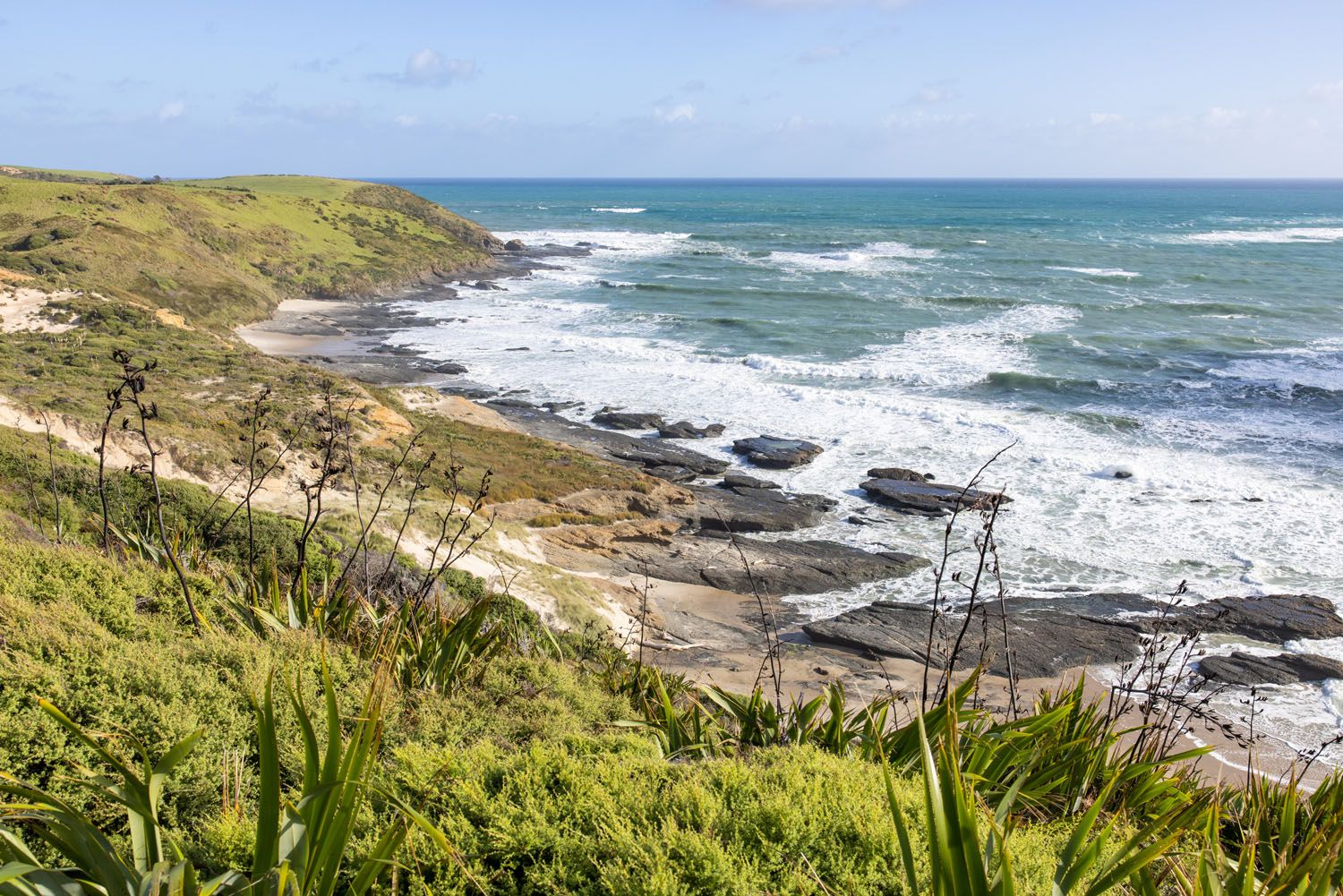
Another view from the Signal Station Track
For those who want to do more in the area, you can also hike down to Martin’s Beach or hike the Waimamaku Coastal Track to Waimamaku Beach (10 km one-way).
14. Visit Waimamaku Beach
Waimamaku Beach is a stunning, remote, quiet beach on the west coast of Northland. It is a short drive from the Signal Station Track. In fact, the Waimamaku Coastal Track connects Signal Station to Waimamaku Beach.
If you don’t want to walk the 10 km one-way to get to Waimamaku Beach, you can drive there, like we did. From State Highway 12, turn onto Waimamaku Beach Road and take it to the end. This short, beautiful drive takes you through farmland, ending at the coast. There is a very small parking area, with room for two to three cars, at the trailhead for the Waimamaku Coastal Track.
From the car park, walk the track along the riverbank. It takes less than five minutes to walk out to the beach and from here, you can explore the area. Again, we were the only ones on the beach during our visit.
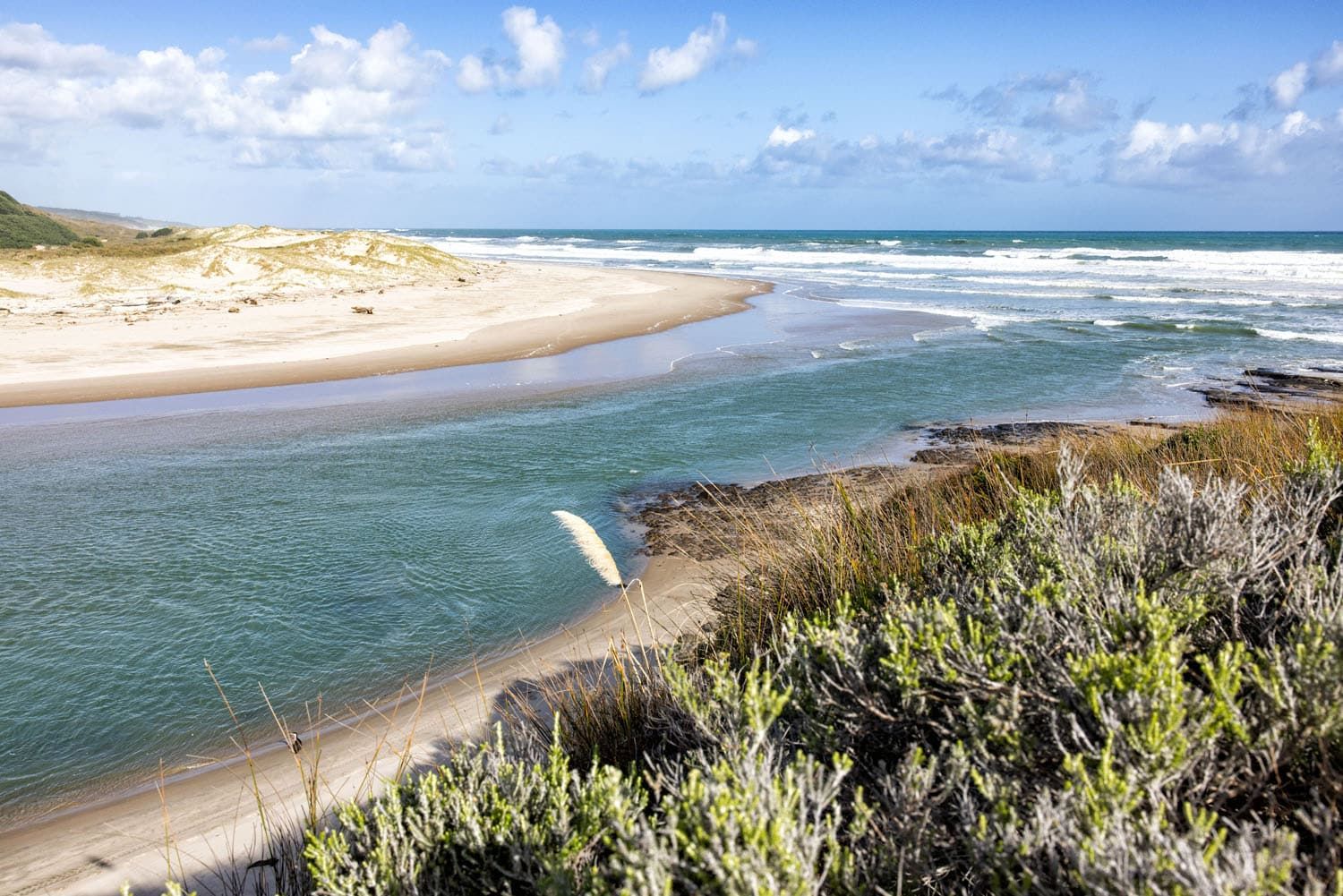
Waimamaku Beach
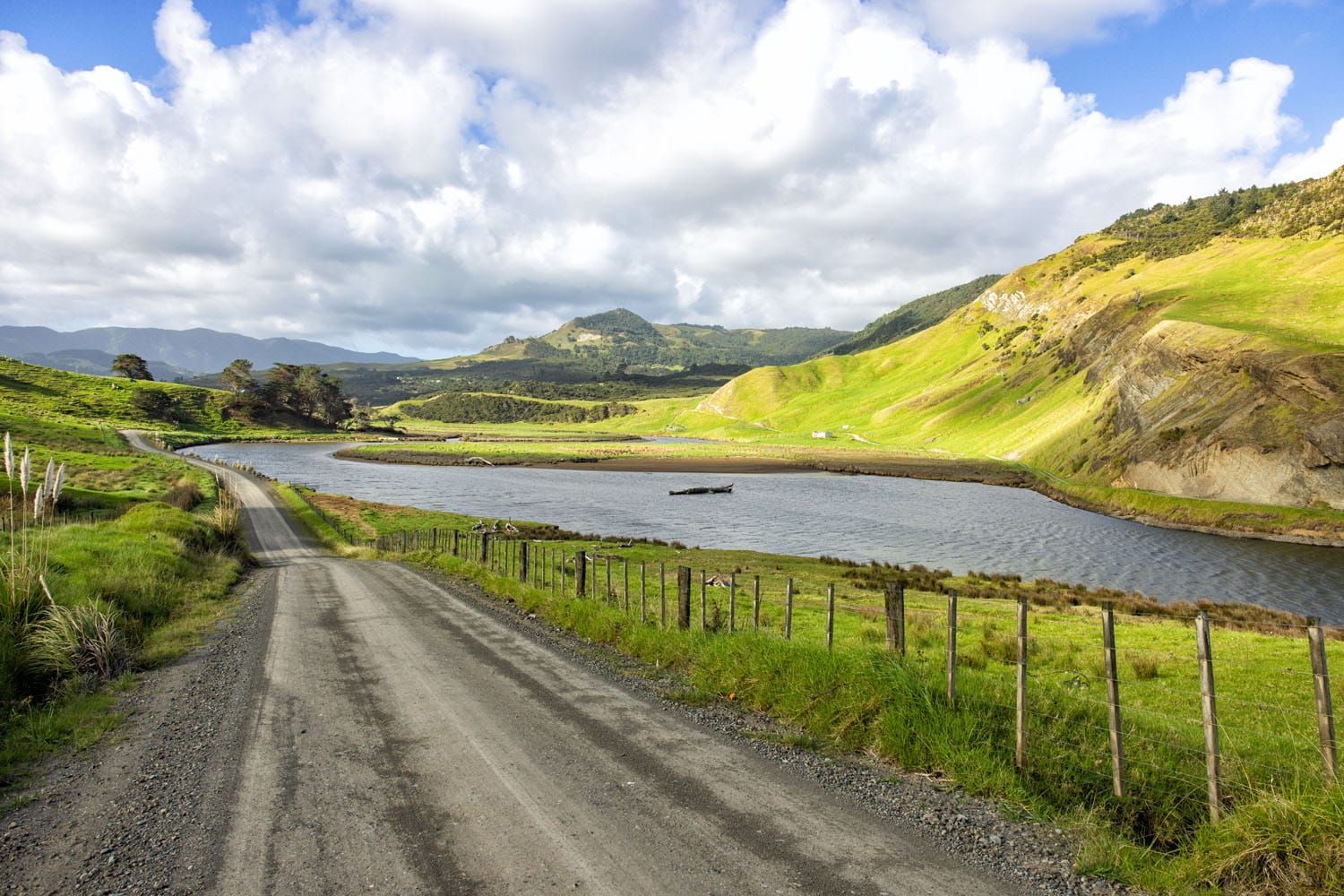
The road to Waimamaku Beach
15. The Te Paki Sand Dunes
Last but not least, the Te Paki Sand Dunes (aka the Giant Sand Dunes) are one of the best things to do in Northland. If you are visiting Northland with kids, put these sand dunes on top of your to do list.
These sand dunes sit on the north end of New Zealand, next to Ninety Mile Beach and a short drive from Cape Reinga.
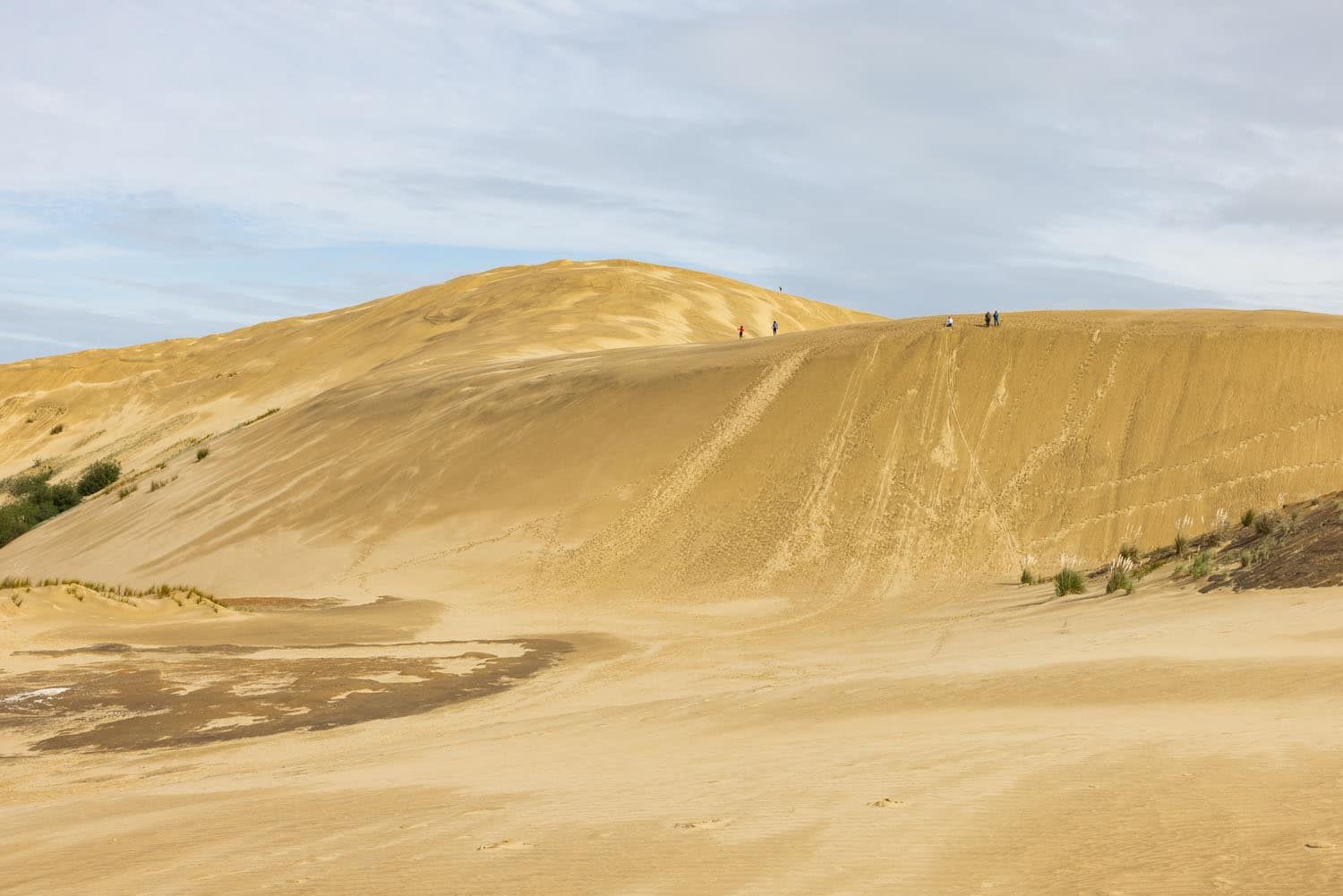
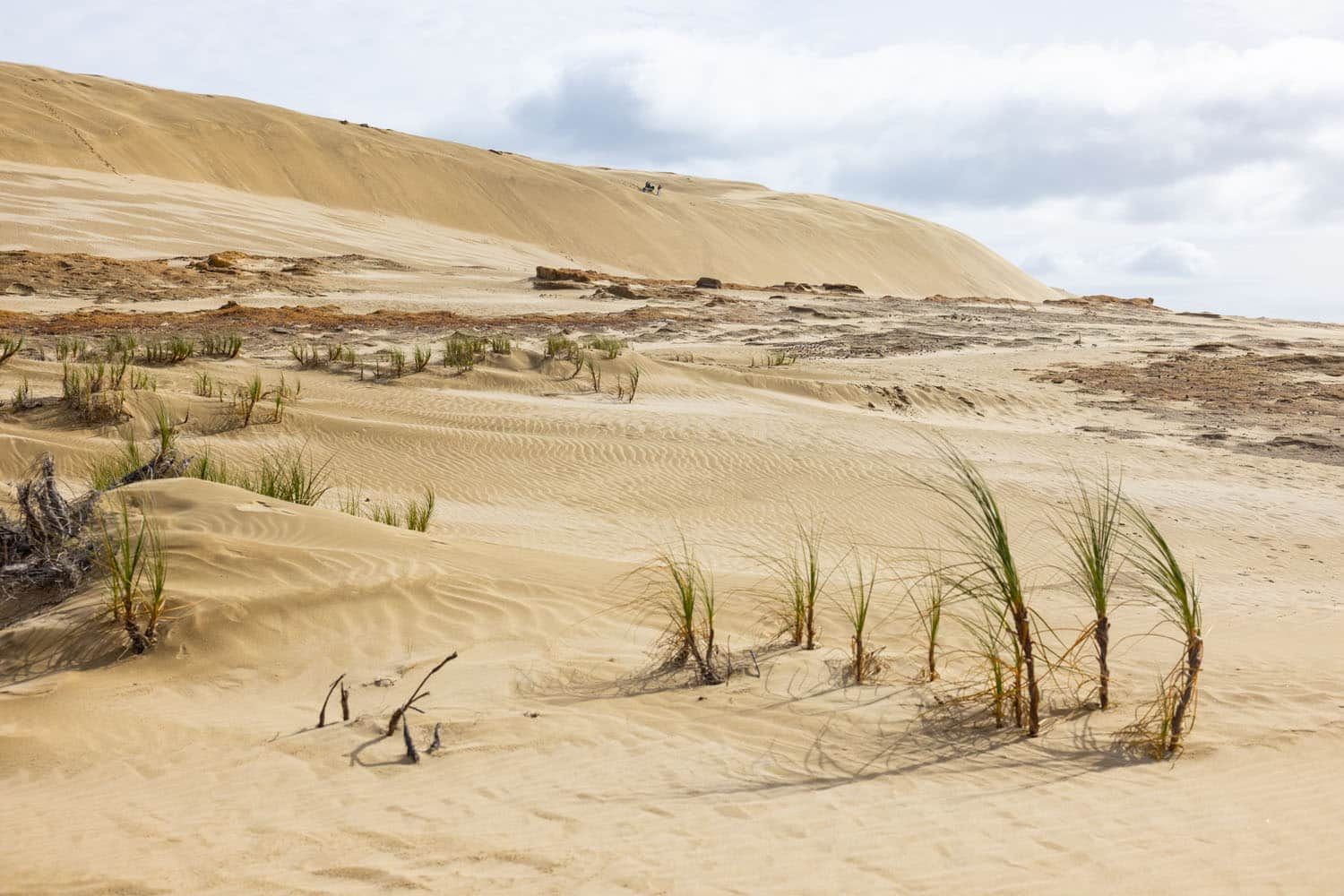
Sandboarding on these dunes is the most popular thing to do here, but you can hike onto the highest dunes for stunning views of this part of New Zealand.
To get here, turn onto Te Paki Stream Road from State Highway 1. This road ends at the parking lot for the Te Paki Sand Dunes. At this parking lot are several stands renting sandboards.
To get out onto the dunes, you will first have to cross Te Paki Stream and then it is a short but tiring hike onto the dunes. On the day we did this, it was very windy and Tim and I were covered with sand by the end of our visit. If you plan to bring a camera, carry it in a bag to protect it from the blowing sand.
A visit here lasts anywhere from an hour to a half a day, depending on what you plan to do here. The sand dunes are free to visit.
Best Things to Do in Northland: On a Map
How to Use This Map: Click the icons on the map to get more information about each point of interest. Click the star next to the title of the map to add this map to your Google Maps account. To view it on your phone or computer, open Google Maps, click the menu button, go to “Your Places,” click Maps, and you will see this map on your list.
How Much Time Do You Need in Northland?
At a minimum, plan on spending three days in Northland. That gives you enough time to drive the Twin Coast Discovery Highway, cruise the Bay of Islands, and visit the beaches and forests.
With more time, you can road trip around the Twin Coast Discovery Highway, staying in the coastal towns along the drive.
Our Northland Itinerary
Day 1: Starting in Auckland, we visited the Kauri Museum, Waipoua Forest, Waimamaku Beach, hiked the Signal Station Track, and then visited the Koutu Boulders. We drove to Paihia and had dinner at Terra Restaurant. We used Paihia as our home base for exploring Northland.
Day 2: Bay of Islands cruise, Russell, and Paihia
Day 3: Ninety Mile Beach, Te Paki Sand Dunes, Cape Reinga, Rarawa Beach
Day 4: Waitangi Treaty Grounds, sights in Kerikeri and Paihia
Day 5: Drive from Paihia to Auckland
Is Northland Worth It?
Northland is a beautiful area of New Zealand to explore. From seeing the kauri trees to hiking on the sand dunes and visiting the coastal beaches, Northland is an underrated area to visit in New Zealand.
Its northern location makes it less likely to show up on most itineraries. Even for those with three to four weeks in New Zealand, your time is better spent on the South Island and visiting some of the highlights of the North Island, such as Taupō, Hobbiton, Waitomo Caves, hiking the Tongariro Alpine Crossing, and Waiheke Island.
But if you have lots of time in New Zealand and if you like scenic drives and coastal scenery, and want to visit an off the beaten path area, then put a few days in Northland into your itinerary.
Where to Stay in Northland
We stayed in Paihia for our entire time in Northland. We chose to stay in one place for a few days, rather than packing and unpacking each day. There are a lot of hotels and restaurants in town, so this makes a very nice home base for exploring the area. For more information about where to stay and eat, take a look at our Guide to Paihia & the Bay of Islands.
Our longest drive was from Cape Reinga to Paihia, about 200km/2.5 hours.
You can road trip the Twin Coast Discovery Highway, staying at B&Bs along the small towns on the drive. There are also quite a few campgrounds as well.
If you have any questions about the best things to do in Northland, or if you want to share your experience, let us know in the comment section below.
More North Island of New Zealand Travel Guides
BAY OF ISLANDS: How to Plan a Trip to the Bay of Islands
PAIHIA: Best Things to Do in Pahia, Russell & Kerikeri
NORTH ISLAND ITINERARY: New Zealand North Island Itinerary: Options for 5 Days to 2 Weeks
TONGARIRO ALPINE CROSSING: Tongariro Alpine Crossing, A Step-By-Step Guide to New Zealand’s Best Day Hike
AUCKLAND: Auckland Itinerary: Best Way to Spend 1, 2 & 3 Days in Auckland
HOBBITON: Photo Tour of the Hobbiton Movie Set
We have TONS more information about New Zealand in our New Zealand Travel Guide, including Auckland, Queenstown, Wanaka, Aoraki/Mount Cook, Franz Josef, Christchurch, Wellington, Taupō, and the Milford Sound.
Note: This post contains affiliate links. When you make a purchase using one of these affiliate links, we get paid a small commission at no extra cost to you.
All rights reserved © Earth Trekkers. Republishing this article and/or any of its contents (text, photography, etc.), in whole or in part, is strictly prohibited.
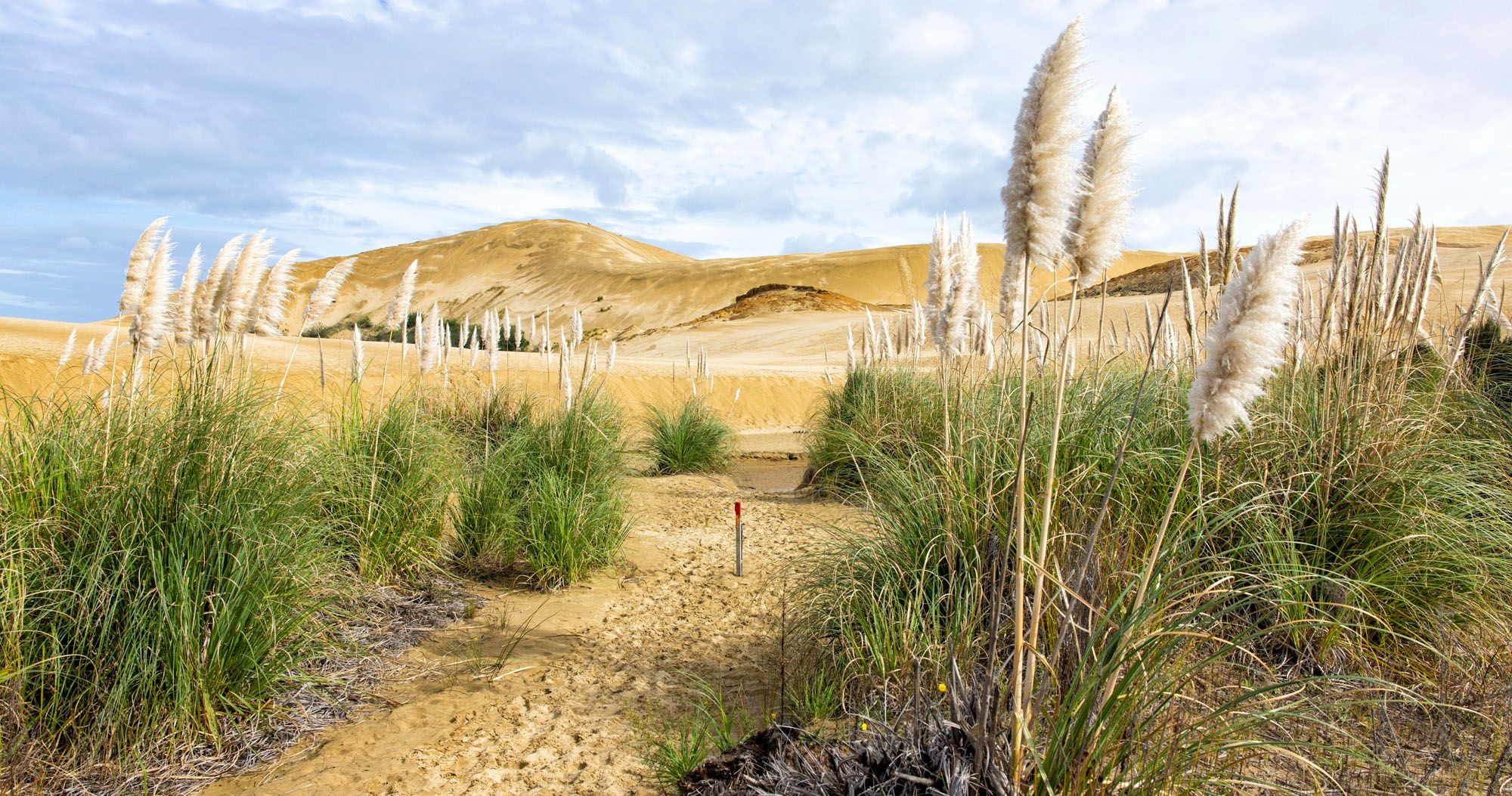
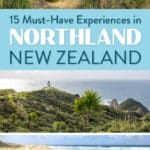

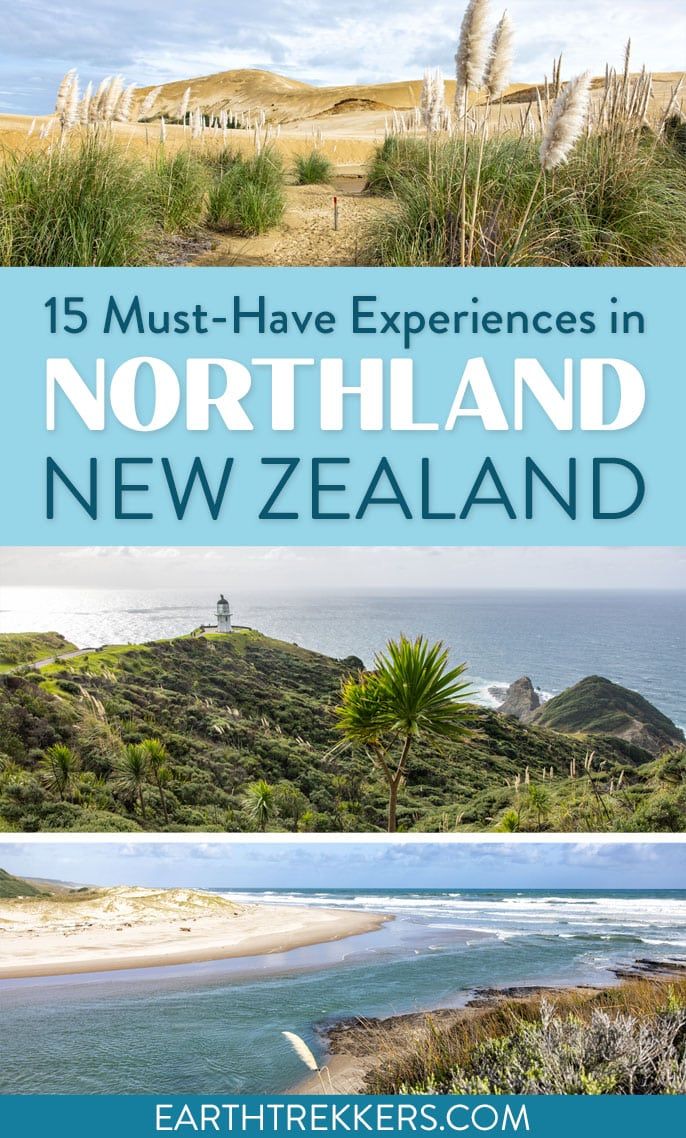
Leave a Reply